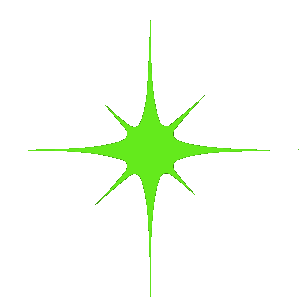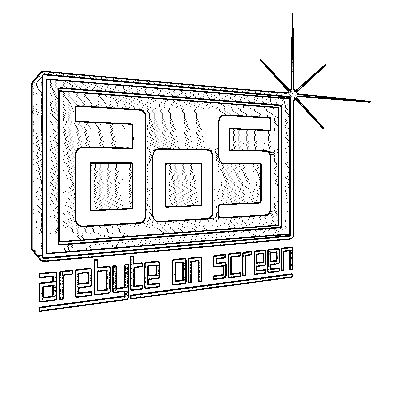
The Art Of No Likes is an ongoing critical investigation into systems of curating and a reflection on the implications of standardisations within social media infrastructures that harvest, manifest and intertwine the production of exhibitions in time-based media. The project shines a critical gaze on the gatekeepers of these infrastructures and associated “economies of like” and related systems of value judgments inherent to capitalist social media platforms. Moving through industries and across interdisciplinary practices the The Art of No Likes offers up an analysis of the “economy of like” across communication formats, experience and environment.
During this online residency at Arebyte, HERVISIONS will present a shape shifting “in conversation” dialogue of shared narratives with artists and cultural practitioners in response to the provocation of The Art of No Likes. The results will be “exhibited” at Arebyte Gallery IRL next year 2021.
The top down, confined terms of engagement and rigid architecture of social networks stunts our communication ecologies. What falls through the cracks? As curators how can we open focus on the remediation and semantics of digital performance and the complexity of emerging cultural shifts, digital archeology, interdisciplinary practice and materiality of the protocol and standardisation of the “economy of likes” residing within the logic of digital audiences.
Conceived by curators Rachel Falconer and Zaiba Jabbar with assistance from Rebecca Edwards with an aim to bring discussions of fluid and unpredictable relationships. Over the coming 3 months expect newly commissioned work, performances and text-based outcomes.
Stay tuned for more!
The Art of No Likes: Phase 1, Beyond The Gate Of The Garden: A reshaping of tools for communication and connection
Videos by Brenna Murphy
The Art of No Likes: Phase 2, Scratch the Surface and I’ll follow you: Surveillance and Censorship at your Mercy
The Art Of No Like, Phase 3: You Can't Hit A Moving Target - Navigating through the noise and volume of opinion
Zaiba Jabbar is an award winning director, independent curator and founder of HERVISIONS (est. 2015). With over a decade of experience in the film and media sectors, her curatorial practice is an investigation into how people in the margins are using technology to create art outside of traditional contexts and making space for themselves in the digital environment. Jabbar was curator in residence at LUX in (2018) and is a board member of Abandon Normal Devices.
HERVISIONS is a femme-focussed curatorial agency facilitating online and offline experiences and collaborations with partners to research and produce innovative commissions, exhibitions and events working across new and emergent technologies and platforms with a strong focus on the intersection of art, technology and culture. Previous exhibitions and partners include, Art Night, Tate Modern, Tate Britain, i-D x Chanel, Boiler Room, LN-CC, BFI, Gossamer Fog, The London College of Fashion, isthisit?, Mira Festival, LOOM Festival and Google Arts and Culture.
Rachel Falconer is a digital curator, researcher and lecturer in Digital Arts Computing and Creative Computing. She also heads up the creative technology prototyping and research initiative Goldsmiths Digital. As an independent curator, researcher and development consultant she operates at the critical intersections of contemporary art practice, emergent technologies, civic data infrastructures and networked culture.
Rebecca Edwards has been the curator at arebyte Gallery since 2016, working across emerging media, new technologies and digital culture. She ran arebyte’s project space in Clerkenwell throughout 2017, which offered artists from outside of London a solo show in the capital, and is currently running hotel generation, a young artist development programme for the gallery. Rebecca’s interests lie in cultivating new curatorial methods across physical and digital space, and in artists working at the intersection of technology, online culture and collaboration. She won the NEON Curatorial Award in 2015 and holds an MA in Curating from The Whitechapel Gallery / The Cass.
Brenna Murphy works with electronic sculpture, building trans-dimensional labyrinths in an ongoing meditation on the framework of sentience and embodiment. She also works collaboratively with Birch Cooper under the collective name MSHR, building and playing with cybernetic systems of light and sound. Her most recent solo exhibition was at And/Or Gallery, where she presented a collection of her web based artworks from the last decade and archived them on her new domain: lattice.tools
Sarah Friend is a Berlin based artist and software engineer, specializing in blockchain and p2p web. She is an alumni of Recurse Centre, New York, and an organiser of the Our Networks conference in Toronto. Previous exhibitions include: Screensavers, Piksel Festival, Bergen; Seasons of Media Art, ZKM Centre for Media Art, Karlsruhe; Remembering Network, Radical Networks, New York; Crypto Grows on Trees, Devcon V, Osaka; Scaffolds I can no longer see, Interaccess, Toronto (2019); Much Ado About Everything, Microwave Festival, Hong Kong; ClickMine, Somerset House, London; Distributed Systems, Gray Area Festival, San Francisco; Perfect and Priceless, Kate Vass Galerie, Zurich (2018); Captive Portal: Customs and Border Protection, Center for Contemporary Art, Tel Aviv (2017). She has been the recipient of the 30 Under 30 Developers In Canada award, the GDC Scholarship for Women in Games and the Blockchain Art Commission from Furtherfield and Neon Festival. She has spoken at Transmediale, Berlin; The New School, New York; and Interaccess, Toronto, amongst others. Her work has been featured in The Art Newspaper, Art the Science, Motherboard and Spike Art Magazine.
Sandra Crisp uses borrowed visuals downloaded from the Net which are reworked over time – using a process of sampling/recycling/drawing and layering the diverse elements of media images, text/graphics, video screen-casts, and camera-phone photos. Recently Crisp has been working with Blender open-source software to create 3d rendered models textured with image fragments downloaded from the Internet, forming complex architectural, vertical forms.
Julieta Gil‘s work oscillates between physical and digital space. Computational media is rapidly evolving and becoming ubiquitous and influential in our everyday life. Digital life is as real as any other kind. Gil is interested in inquiring into what our experience may be when these simultaneous realities form and interact with each other, creating objects, video, images and other narratives that reflect upon our past, present and future.
Chloe Alexandra Thompson is a Canadian, Brooklyn based interdisciplinary artist and sound designer composing works of sonic minimalism that envelope listeners into a state of equilibrium and fill rooms with discrete frequencies. Her work is composed through audio programming, live processed instruments and field recordings. Focused on live performance and spatial intervention, she engineers a multi-channel interplay of psychoacoustics to produce felt effects on the body. Fascinated by digital technology’s seemingly endless possibilities for experimentation, she routinely collaborates with other artists to explore new avenues for sonic environments and experiences.
Doreen A. Ríos (Mexico, 1992) is an independent curator, chief curator of the Centre for Digital Culture in Mexico City and a lecturer of the M.A. in Visual Studies and B.A. in Digital Arts at Universidad Autónoma del Estado de México. Working with digital art and specialised in digital cultures and new media practices, Ríos’ curatorial practice focuses on hybrid materiality. Simultaneously she is also the founder of [ANTI]MATERIA, an online platform dedicated to the research and exhibition of Mexican digital art.
Off Site Project is an online curatorial practice founded by Pita Arreola-Burns and Elliott Burns, which runs a programme of homepage exhibitions; downloadable ZIP shows; and a residency based in Google Maps. Through its exhibition programme Off Site Project has explored issues pertaining to our increasingly networked, digitised world, from post-colonialism in Latin America to the increasingly monetised wellness industry, around societal effects of the internet to the prevalence of conspiratorial thinking, as well as the creative identity of AI minds and our ability to inhabit multiple realities through avatar creations.
Sara Sassanelli is Curator at the Institute of Contemporary Arts (London) and an associate of CONDITIONS (Croydon). Previous work consists of independent curation through club nights inner u and move close. They are also producer for Eve Stainton and Fernanda Muñoz-Newsome.

